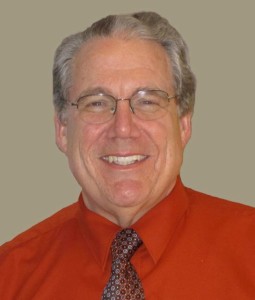 Growing up in a small town in Utah, it would be easy to make assumptions about my early life, but the area was surprisingly diverse. My parents in particular were quite focused on pushing for diversity and complete acceptance. This was especially true for gender diversity; their viewpoint was that women were just as capable of doing anything men could do.
Growing up in a small town in Utah, it would be easy to make assumptions about my early life, but the area was surprisingly diverse. My parents in particular were quite focused on pushing for diversity and complete acceptance. This was especially true for gender diversity; their viewpoint was that women were just as capable of doing anything men could do.
One of my favorite family photos is of my mother shoveling gravel into a cement mixer when my parents were building their own house. My sister built sheds and pounded nails alongside me. And my mom taught me as much about cooking as she taught my sister. While it’s true that society inculcates implicit biases, I feel like my family life inculcated a broad acceptance.
During my entire life and my career, I’ve always benefited from having a wide diversity and points of view in everything I’ve been involved with. This is certainly true here at the Lab and in my career in general. Diversity and acceptance are core values for me, and I know that implicit bias and gender issues in research and academia go way back.
We have discussions of implicit bias before we begin any major job search now; it’s now just part of our general process. Engineering is unique among the scientific divisions because it’s matrixed out to other divisions, and so if there are issues at the Lab, say, a lack of sensitivity or understanding, our division often hears about them very quickly. The Engineering Division is built on close communication with all the scientific partners we deal with.
I do think it’s important that we understand diversity in its fullest extent; often we’re looking at just gender, sexual orientation, or ethnicity. But there are also things like capability. That’s why I pushed hard for the incorporation of Project SEARCH here at the Lab. Project SEARCH works with people who have had developmental challenges—people who’ve tended to be on the fringes of society, giving them the tools they need to be successful in work and life.
With the help of the Lab’s Diversity and Inclusion office, we’ve been able to bring in graduates of that program and place them in the Lab and provide them with ongoing employment. Three of the first SEARCH graduates brought to the Lab now have career appointments—in PBD, NERSC, and here in Engineering.
My involvement in collaborating with Project SEARCH comes from personal experience—I was a special needs soccer coach for 12 years, and my oldest son is a Project SEARCH graduate. The program was immeasurably rewarding for my son, and I saw what an impact it could make for employers who proactively collaborate with Project SEARCH.
I worked for two or three years to bring Project SEARCH to the Lab. I really felt that, given the diversity of work up here—everything from directors to scientists to clerical workers—there were opportunities for people with such a wide range of capabilities. Given our shuttle bus system, it’s actually an environment that is more welcoming for Project SEARCH graduates, since many of them don’t drive.
If you really want diversity and inclusion to be ubiquitous, people have to be an integral, accepted part of the team, not called out specifically for their capabilities or any other factors.
-Kem Robinson, Director, Engineering Division

Thoughtfully written article explaining how long it took to convince the Lab that this program has a role to play. While we are all-about-science to many, the reality is the diversity endemic when people are brought together to achieve a goal.
Ms. Jefferson,
I totally agree! Very well said.